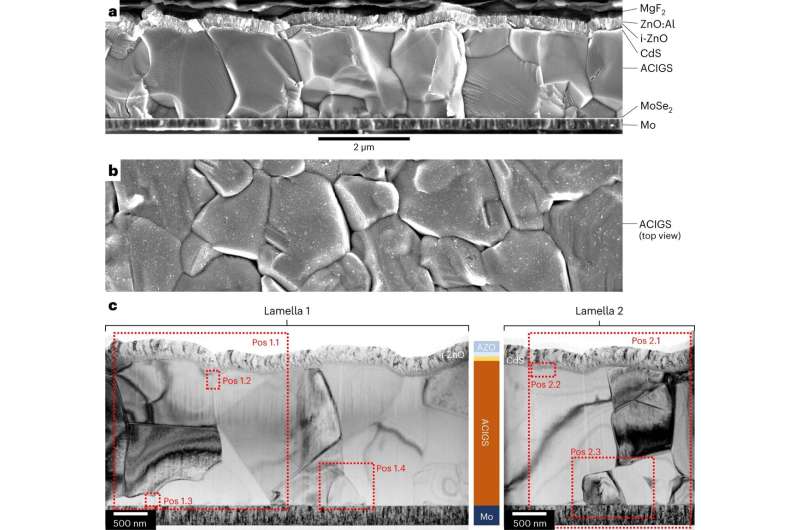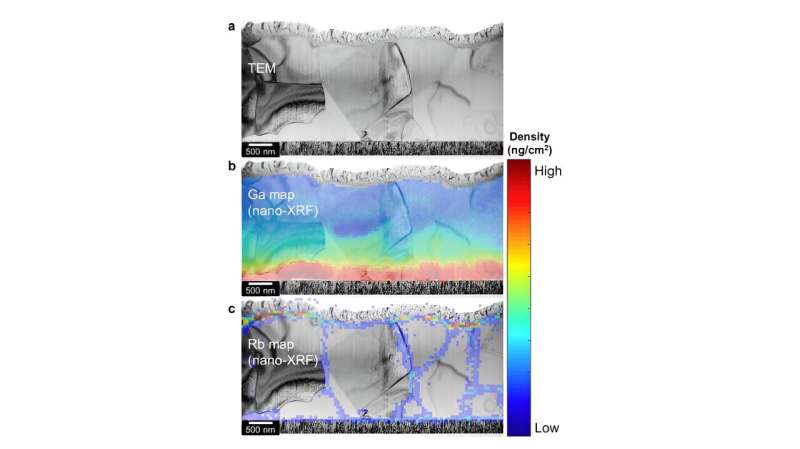
Uppsala University is the new world record holder for electrical energy generation from copper indium gallium selenide (CIGS) solar cells. The new world record is 23.64% efficiency. The measurement was made by an independent institute, and the results are published in Nature Energy.
The record results from a collaboration between the company First Solar European Technology Center (formerly known as Evolar) and solar cell researchers at Uppsala University.
"The measurements that we have made ourselves for this solar cell and other solar cells produced recently are within the margin of error for the independent measurement. That measurement will also be used for an internal calibration of our own measurement methods," says Marika Edoff, Professor of Solar Cell Technology at Uppsala University, who is responsible for the study.
The previous world record was 23.35% (Solar Frontier, Japan), preceded by 22.9% (ZSW, Germany). Uppsala University has held the record before, the first time being in the 1990s in the research collaboration Euro-CIS.
"At one time, we also held the record for a series-connected prototype. Even though it's quite a long time since we held the cell record, we've often been just behind the best results, and of course, there are many relevant aspects to consider, such as the potential for scaling up to a large-scale process, where we have always been at the forefront," Edoff says.
Solar cells are increasing rapidly worldwide, and solar power accounted for just over 6% of electricity around the globe in 2022, according to the International Energy Agency (IEA). The best solar modules made of crystalline silicon, which is the most widely used material in solar cells, currently convert more than 22% of sunlight to electric power, and modern solar cells are both low-cost and stable in the long term.
One target in solar cell research is to attain more than 30% efficiency with reasonable production costs. The focus is very often on tandem solar cells as being more efficient, but so far, they have been too costly for large-scale use.
The world record of 23.64% has been measured by the independent institute Fraunhofer ISE in Germany. The scholarly paper presents a thorough material and electrical analysis of the solar cell as well as a comparison with previous records for the same type of solar cell from other research institutions.
A solar cell's most important properties are the ability to absorb light and the ability to transport energy to an electrical load. For this to succeed, the material must be able to absorb an optimal portion of sunlight while avoiding wasting this energy by converting it into heat within the solar cell.

CIGS solar cells consist of a glass sheet made of normal window glass that has been coated with several different layers, each of which has a specific task. The material that absorbs the sunlight consists of copper, indium, gallium, and selenide (hence the acronym CIGS), with additions of silver and sodium.
This layer is placed in the actual solar cell between a back contact of metallic molybdenum and a transparent front contact. To make the solar cell as efficient as possible in separating out electrons, the CIGS layer is treated with rubidium fluoride. The balance between the two alkali metals, sodium, and rubidium, and the composition of the CIGS layer are key to the conversion efficiency, i.e., the share of the complete solar spectrum that is converted to electric power in the solar cell.
More information: Jan Keller et al, High-concentration silver alloying and steep back-contact gallium grading enabling copper indium gallium selenide solar cell with 23.6% efficiency, Nature Energy (2024). DOI: 10.1038/s41560-024-01472-3
Citation: Researchers set new world record for CIGS solar cells (2024, February 26) retrieved 26 February 2024 from https://techxplore.com/news/2024-02-world-cigs-solar-cells.html
This document is subject to copyright. Apart from any fair dealing for the purpose of private study or research, no part may be reproduced without the written permission. The content is provided for information purposes only.
